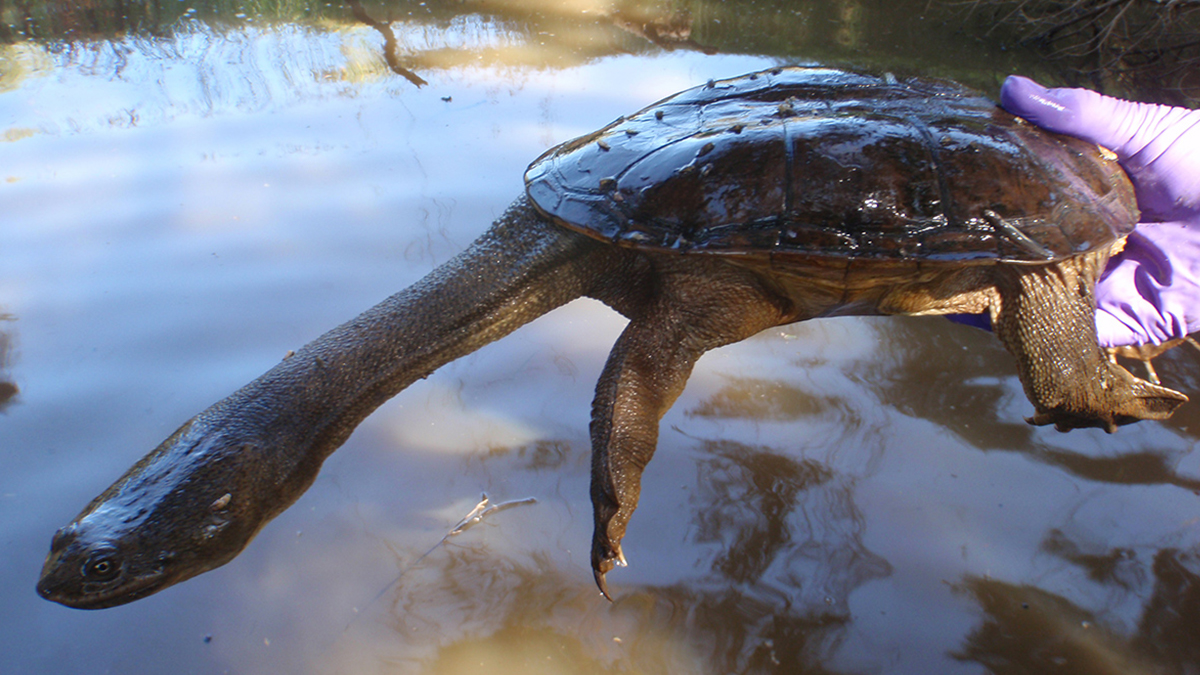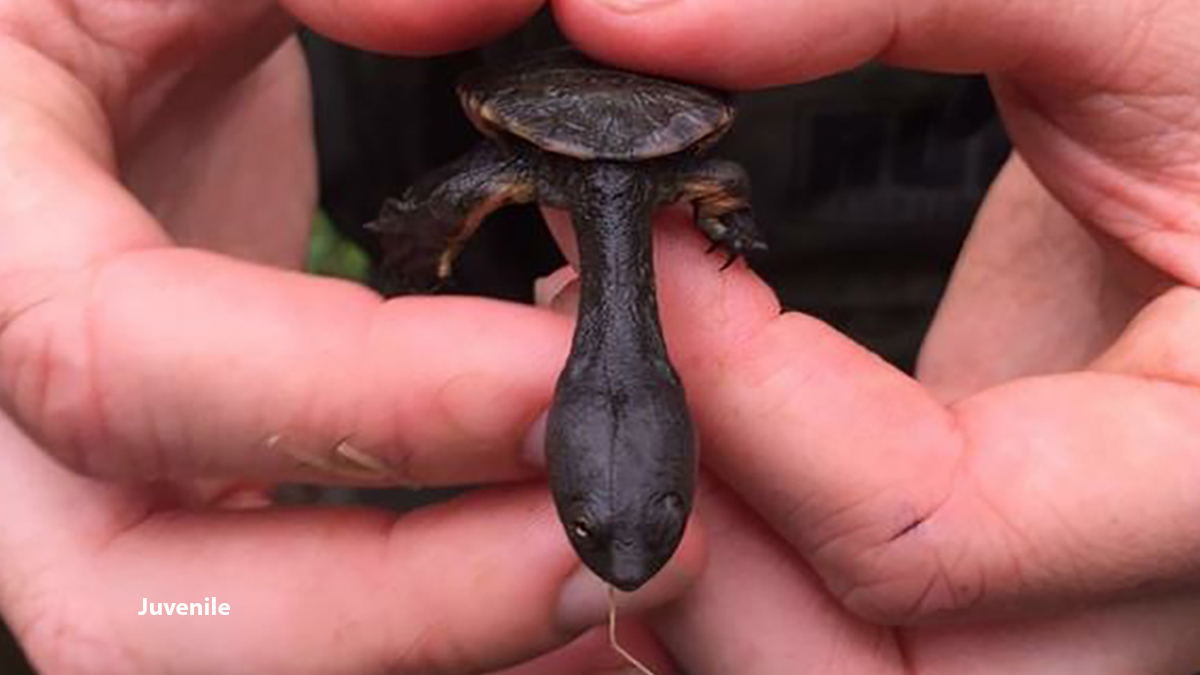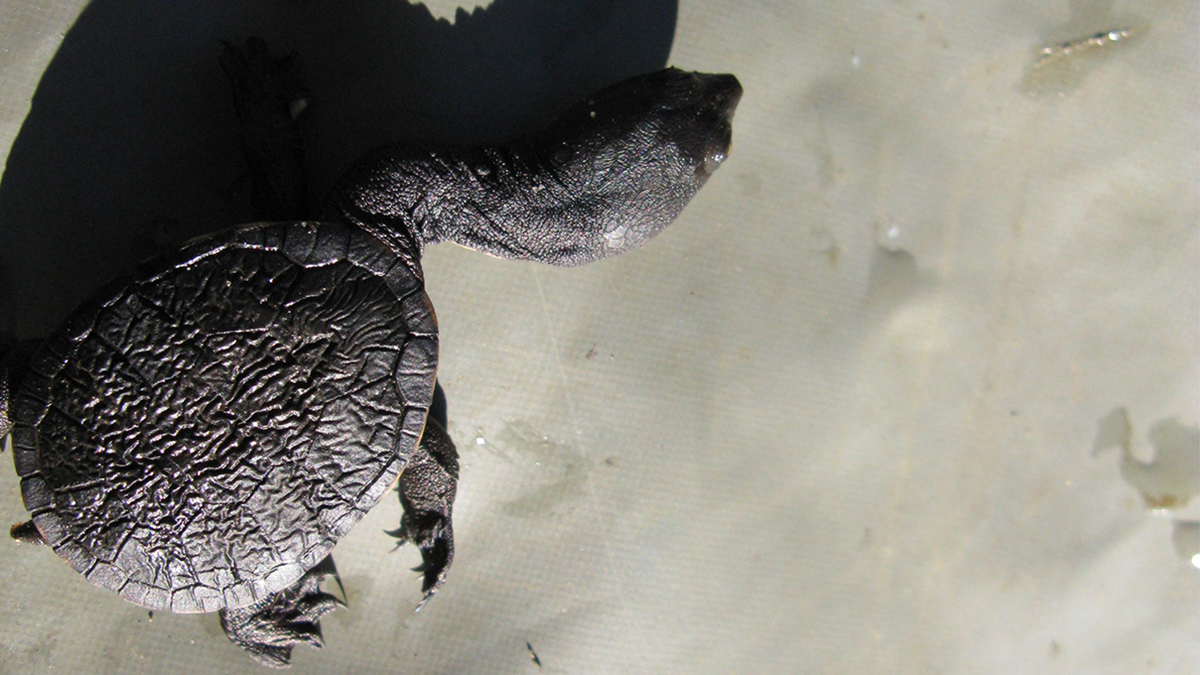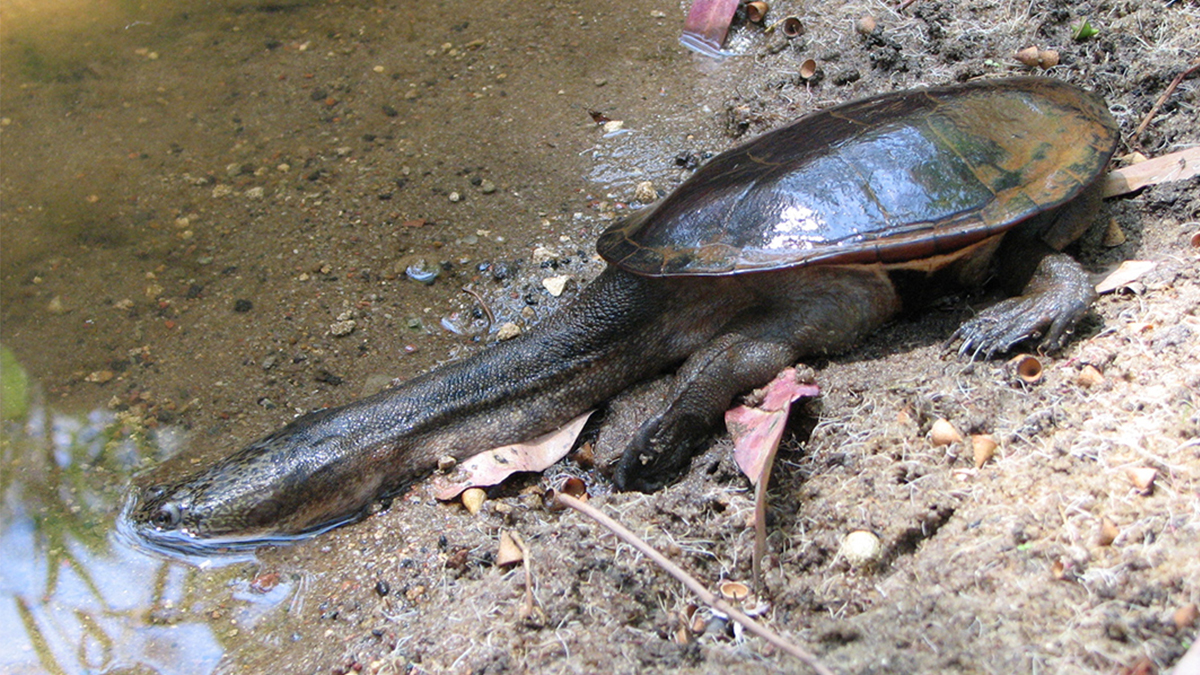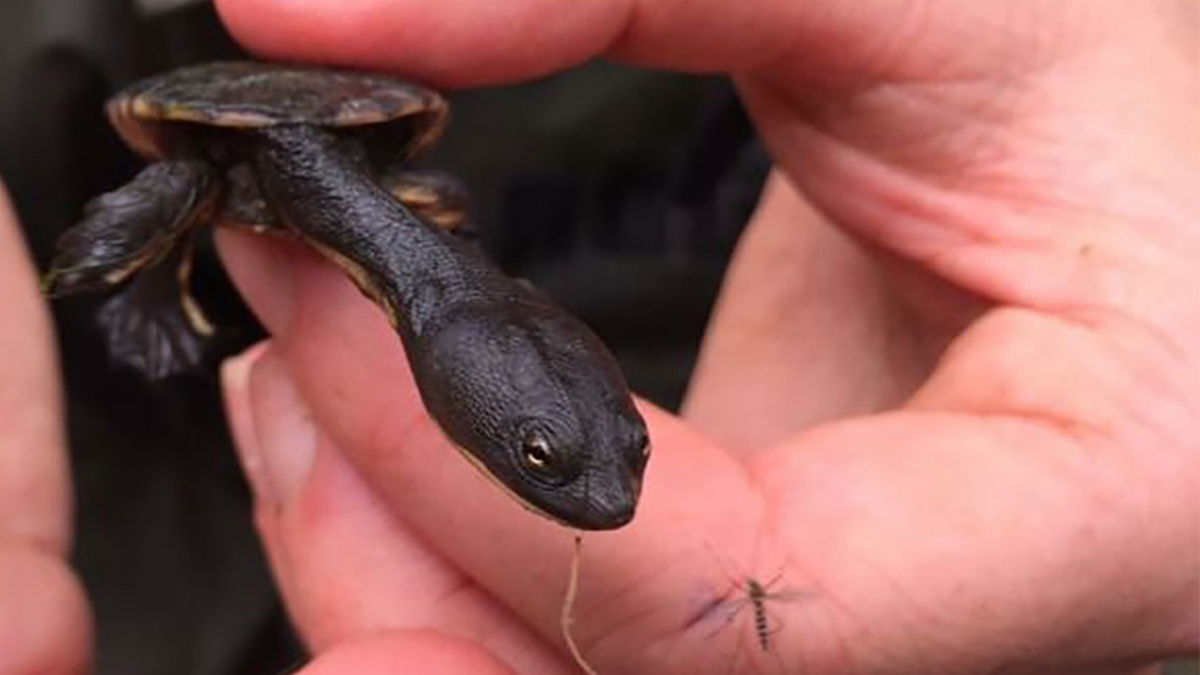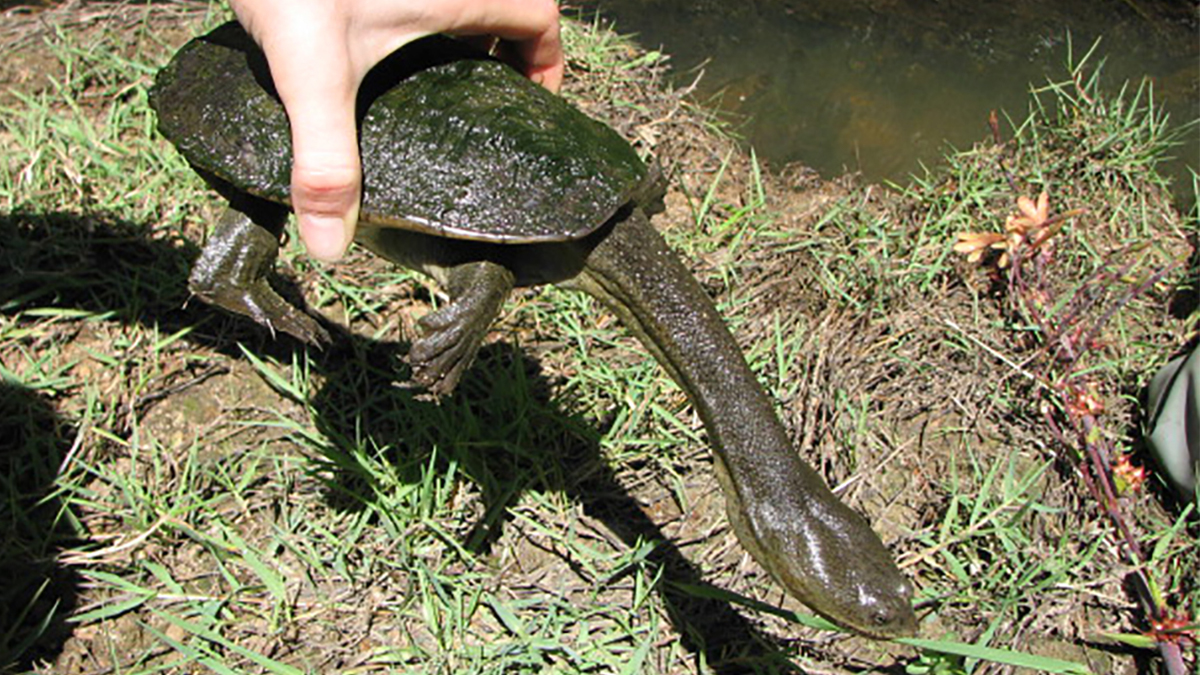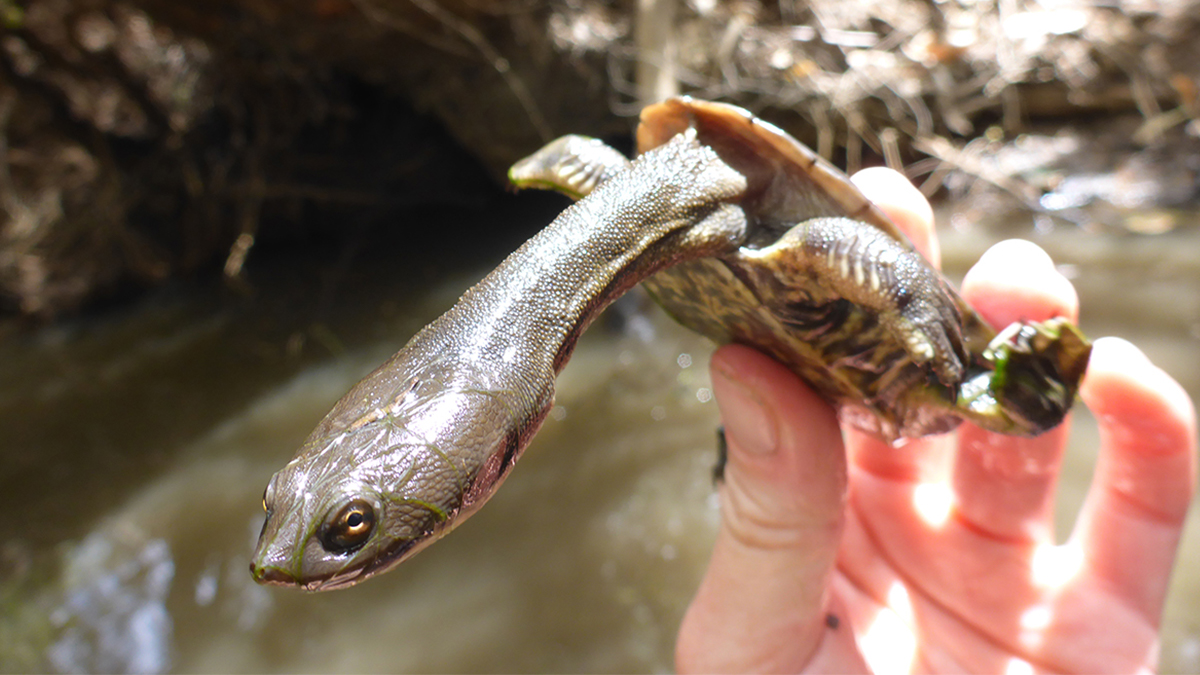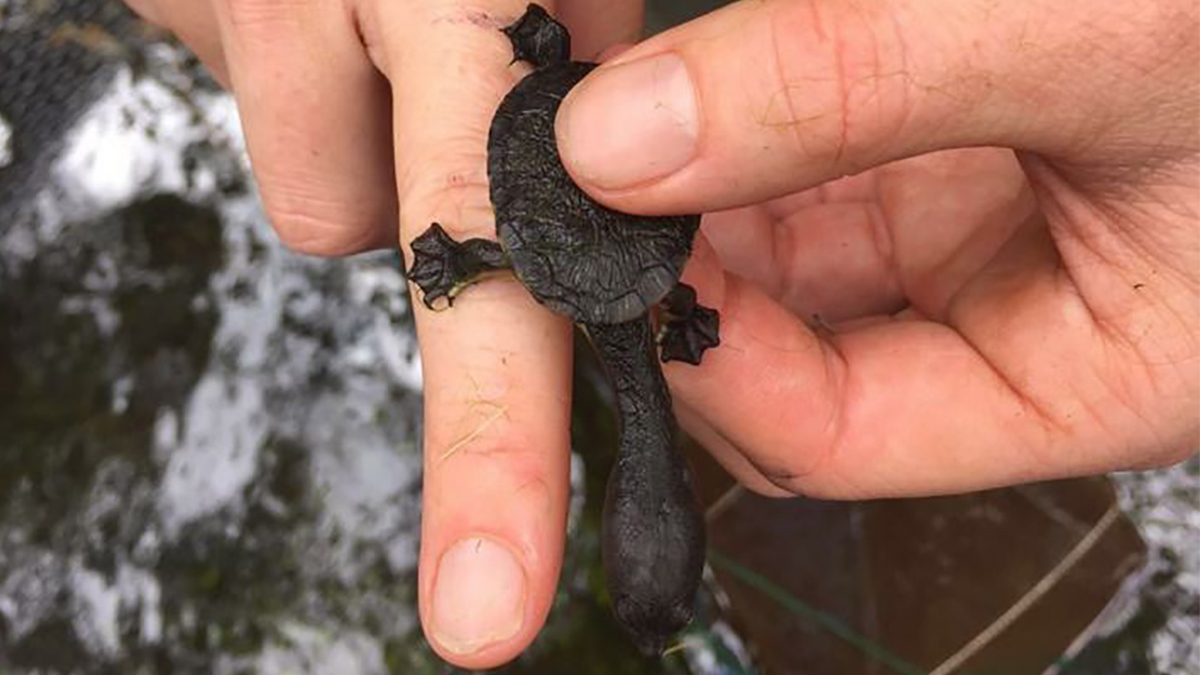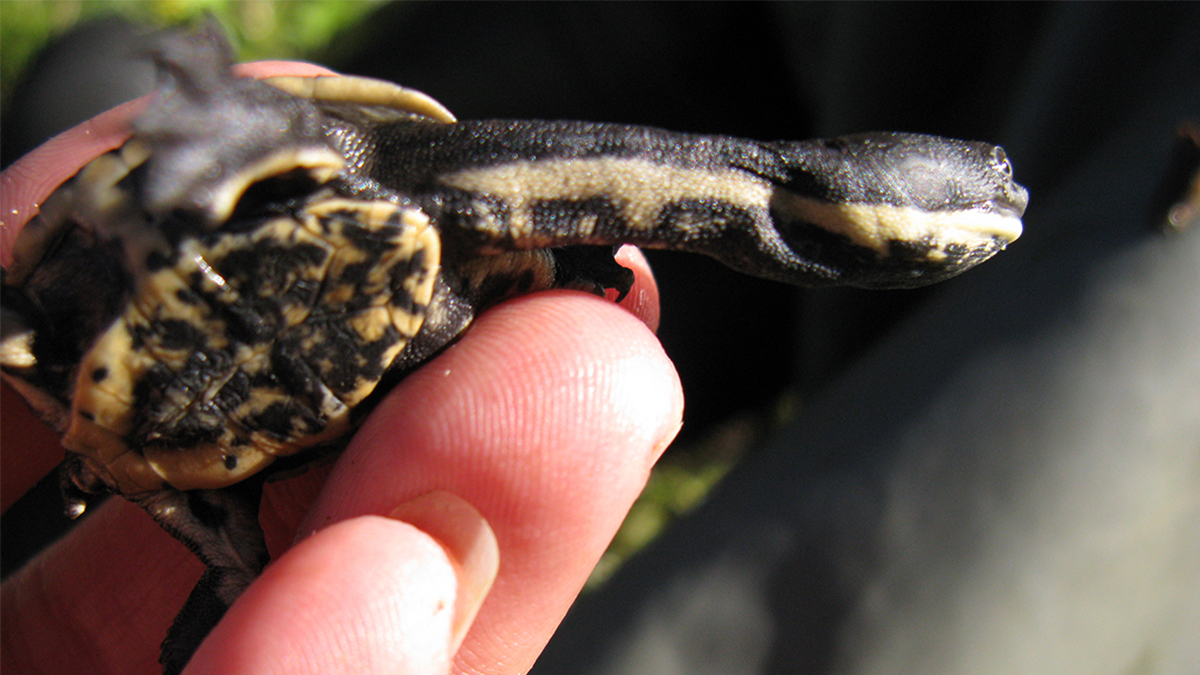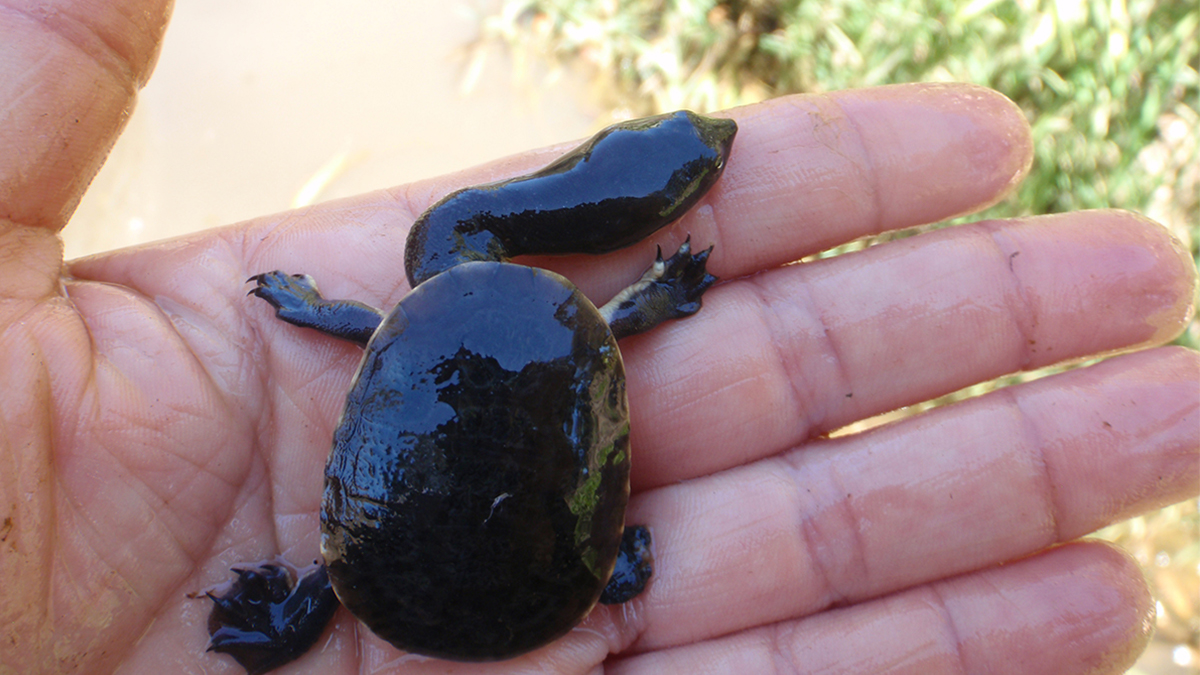South-western snake-necked turtle - Chelodina colliei
Taxonomy note: This species has had a complicated taxonomic history. For many years there has been confusion surrounding C. colliei and the northern snake-necked turtle (Chelodina rugosa) since the two species were first recognised as separate species. In 1889 the two species were mistakenly considered as one widespread species and this concept was followed until 1967 when they were confirmed as two distinct species as originally suggested, with the southwestern snake-necked turtle being C. oblonga. However, in 2013 this was incorrectly changed giving the oblonga name to the northern snake-neck, with the southwestern snake-neck being called C. colliei. Recent testing has confirmed that the holotype of C. oblonga is in fact the southwestern snake-necked turtle, but to avoid further confusion between the two species the International Commission on Zoological Nomenclature has ruled that the southwestern snake-neck continue to be C. colliei and the northern snake-neck to be C. rugosa, with C. oblonga rendered obsolete.
Identification
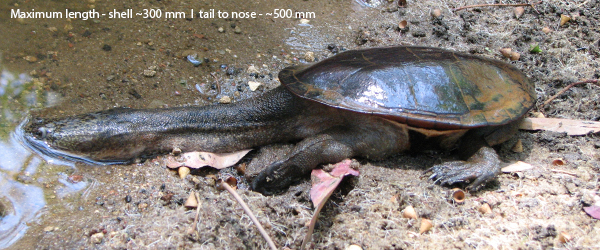
Chelodina colliei, the southwestern snake-necked turtle is a semi-aquatic freshwater turtle characterised by a long neck that retracts sideways into the shell. The species has a distinctive shell that narrows slightly at the front. The colour of the shell generally ranges from dark brown to black, while the underside is usually a pale white/yellow. The species skin is covered in tubercles and generally an olive-grey colour with dark mottling on the upper side, and pale grey on the underside.
The head is streamlined, elongated, and somewhat flattened, barbells are present on the chin, and the snout protrudes slightly forward. The species has limbs with distinct ankle joints, and webbed feet, with four claws. Males are generally smaller than females. They have longer tails and slightly more curved plastrons than females. The carapace length of C. colliei has been recorded at lengths up to almost 400 mm, however, are typically below 300 mm. Hatchlings have a carapace length of approximately 30 mm.
Distribution
Chelodina colliei can be found throughout the south west of WA. It is found from the Hill River region (approximately 300 km north of Perth) through to the south west and east along to the south coast (as far as the Fitzgerald River National Park).
Habitat
Chelodina colliei lives in a broad range of seasonal and permanent freshwater habitats including wetlands, lakes and rivers. They are also capable of living in urban and agricultural environments, such as urban lakes in the Perth metropolitan region, and farm dams (as long as there is sufficient habitat, food resources, and water quality).
Biology
Chelodina colliei spends the majority of its life in the aquatic habitat of the wetlands it inhabits and adult C. colliei are the underwater apex predator, are generalist feeders, and opportunistic carnivores. The species diet changes seasonally and consists of a broad range of macro-invertebrates, but can also include carrion, frogs, fish, as well as terrestrial organisms that fall upon the water. Hatchlings may also eat aquatic plants as well as midge and mosquito larvae. The species uses the ‘gape-and-suck’ feeding method typical of pleurodirans, where the turtle will strike at passing prey quickly enlarging the mouth cavity, which acts like a vacuum sucking the prey into the mouth.
Aging wild C. colliei is not currently possible, however, in natural environments freshwater turtles are estimated to live for 30-40 years. The carapace length (CL) of C. colliei is used to indicate sexual maturity. Males with CL >130 mm are considered mature. While a minimum size for female sexual maturity is not available, females with CL >160 mm have been shown to be sexually mature. Breeding occurs within the wetland during winter and spring. Nesting occurs later in the year, within two distinct seasons: Spring (September to November), and Summer (December to January). During this time, a single female can lay up to three clutches, totaling between 25 and 40 eggs. An average clutch size of eight eggs is reported for the spring reproductive season, and four eggs for the summer season, while the largest reported clutch size was 25 eggs.
Nesting is reporting to be cued by seasonal rain-bearing low pressure systems, falling barometric pressure and an air temperature above 17°C. Females are reported to leave the wetlands en-masse during these conditions, usually in two groups, approximately two weeks apart. Chelodina colliei typically choose nest sites that are open with minimal vegetation, however, during the search for a nesting site, available vegetation is used for concealment and protection from predators. Female turtles may spend up to an hour out of the water searching for, and moving to a suitable nesting site, that can be anywhere from one to 800 m from the water’s edge, but generally within 500 m. The nesting process can take female turtles an additional 25 to 45 minutes to complete, which includes digging the nest, laying the eggs, re-filling and compacting the nest.
The average size of a C. colliei egg is 3.49 cm by 2.13 cm, and 9.3 g in weight. Chelodina colliei egg incubation period ranges from 210 to 230 days. Hatchling C. colliei range from CL 29 to 33 mm. There is some variation in hatchling emergence timing, with some hatchlings emerging from the nest as early as May while others emerging in late August. After emergence hatchlings are thought to head straight to nearby wetlands.
They have the ability to undertake overland migrations to colonise seasonal habitats and may do this in the wetter months. To survive dry periods they have the ability to go into a state of dormancy called aestivation. During this time they will burrow into mud or leaf litter and wait out the dry hot conditions by lowering their metabolic needs and live on stored body fat. During this time they are vulnerable to foxes and human activity such as clearing or ground works.
Conservation status
Chelodina colliei is currently listed as ‘near threatened’ by the IUCN, although its status has not been assessed for 20 years.
The most recent survey of 35 urban wetlands revealed populations of C. colliei in Perth wetlands are alarmingly low. There were less than 25 turtles captured at ~60% of wetlands, and juvenile turtles were not captured in ~40% of wetlands studied. The study identified that the accessibility of native vegetation surrounding urban wetlands was a significant factor impacting upon the abundances of C. colliei and the presence of juveniles within the populations, likely owing to it providing suitable nesting sites. This suggests that populations are declining through lack of recruitment.
Management
Threats to local populations may include injury by traffic, predation by foxes, fencing that blocks migrations, illegal fishing by humans, and destruction of natural habitat.
Chelodina colliei should be left alone to undertake their natural activities which includes making migrations overland to nest (it is illegal to interfere with this native species).
Further information
If you find an injured turtle, contact the Department of Biodiversity Conservation and Attractions Wildcare Helpline on (08) 9474 9055. https://www.dpaw.wa.gov.au/about-us/contact-us/wildcare-helpline
